Echinocactus Cactus Varieties: ID Photos & Care Basics
Let’s talk about a super cool group of cacti – the Echinocactus! These spiky dudes come from Mexico and parts of the U.S. There are six main species in this genus, with lots of different varieties too.
The most famous Echinocactus is probably the Golden Barrel cactus. As the name hints, it looks just like a golden ball covered in spines! This guy goes by the science name Echinocactus grusonii. With its bright yellow spines and round barrel shape, the Golden Barrel definitely stands out.
But the Echinocactus family has way more members to check out. Some have twisted spiky columns, while others are short and stout. Their colors can range from green to reddish-brown. What they all have in common are those sharp spines and a killer ability to thrive in hot, dry climates.
Get ready to meet the whole cool cactus crew! We’ll cover what each type looks like, plus tips on how to keep these prickly plants happy at home. It’s gonna be a spiketastic journey through the world of Echinocactus.
Contents
- 1 Echinocactus Types
- 1.1 Echinocactus grusonii (Golden Barrel Cactus)
- 1.2 Echinocactus grusonii var. albispinus
- 1.3 Echinocactus horizonthalonius ssp. horizonthalonius
- 1.4 Echinocactus horizonthalonius ssp nicholii
- 1.5 Echinocactus parryi
- 1.6 Echinocactus platyacanthus (Candy Barrel Cactus)
- 1.7 Echinocactus polycephalus (Harem Cactus)
- 1.8 Echinocactus polycephalus subs. xeranthemoides
- 1.9 Echinocactus texensis (Horse Crippler Cactus)
- 1.10 Echinocactus texensis cv. Anayami Monstr
- 2 Growing and Caring for Echinocactus
- 3 How to Propagate Echinocactus From Seed
- 4 Frequently Asked Questions
Echinocactus Types
Echinocactus grusonii (Golden Barrel Cactus)
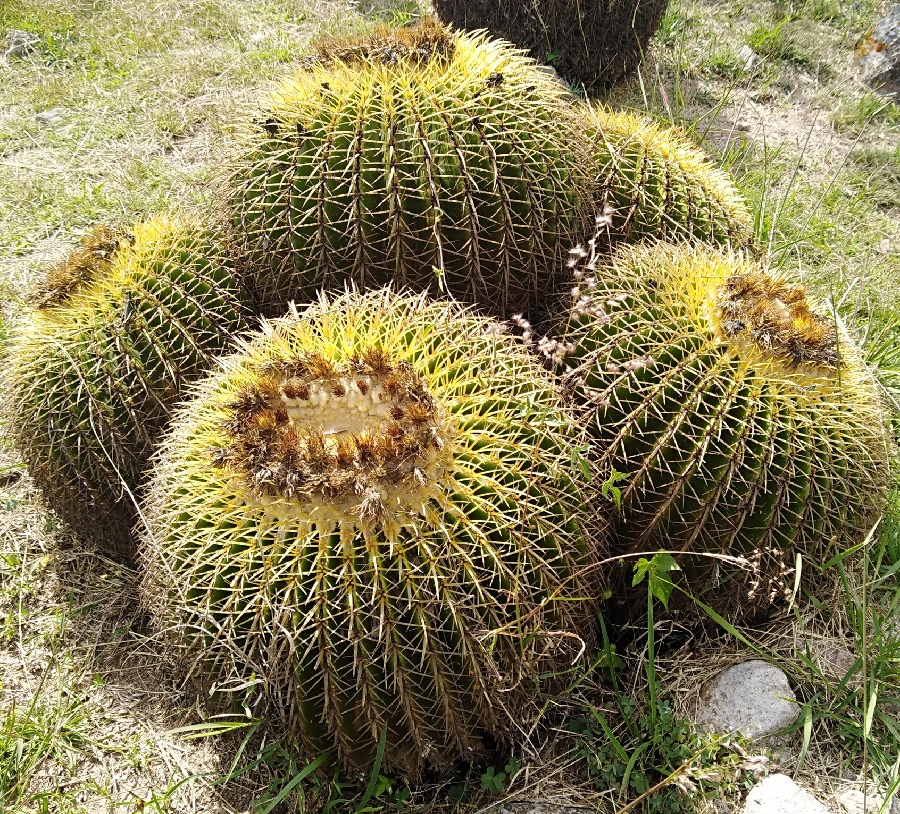
Echinocactus grusonii has usually a single slowly growing globe-shaped stem that became elongated (barrel-shaped) in maturity, up to 90 cm (180 cm) in height and spread. It may offset with advanced age and a few multiples occur even at small sizes. Its stem is pale green and heavily ribbed.
Echinocactus grusonii var. albispinus
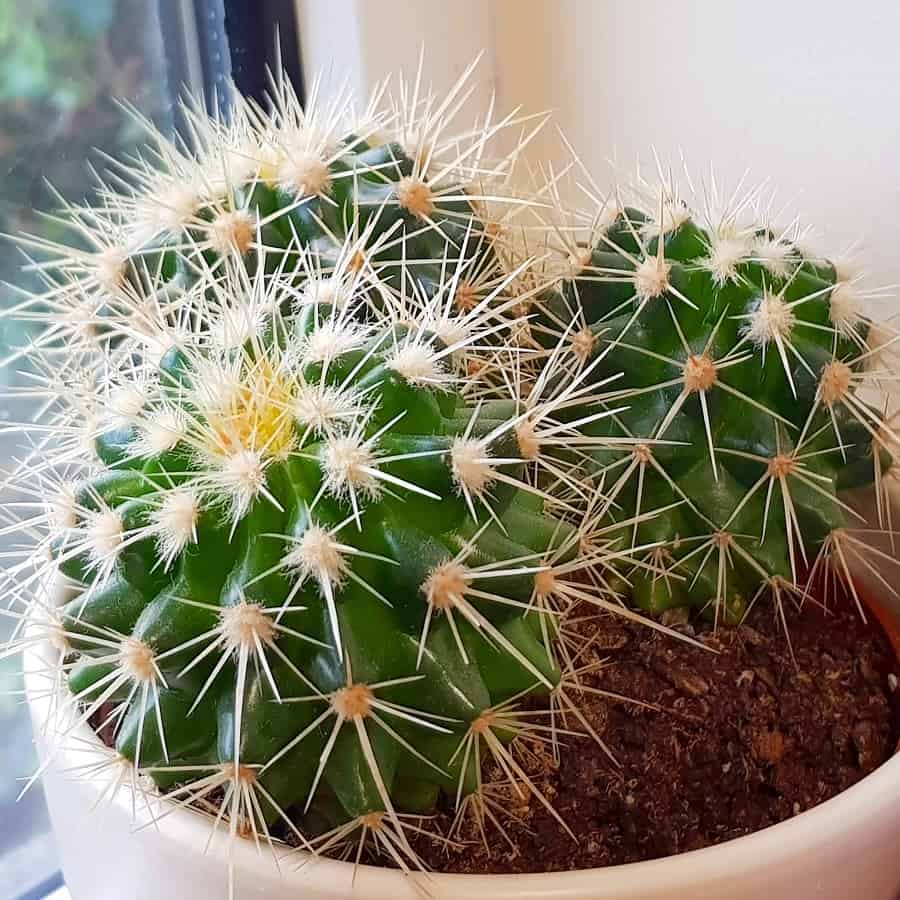
Echinocactus grusonii var. albispinus looks just like a regular “golden barrel cactus” but the spines are all white instead of yellow.
Echinocactus horizonthalonius ssp. horizonthalonius
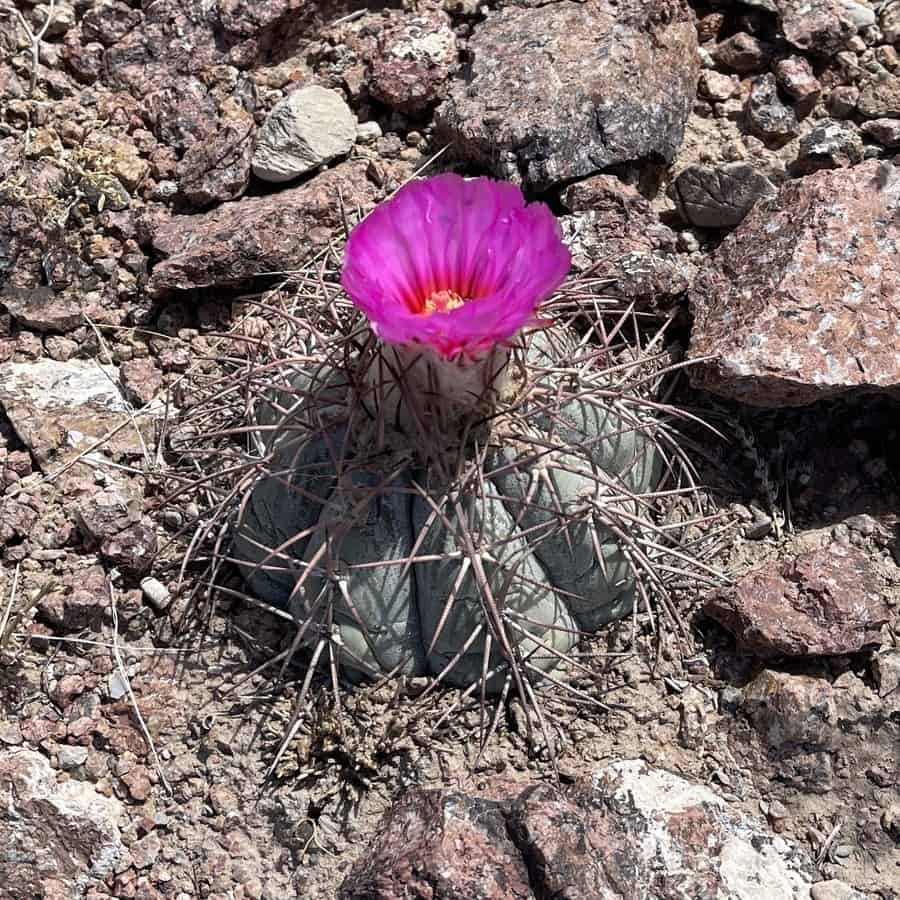
Echinocactus horizonthalonius ssp. horizonthalonius is a relatively small barrel cactus that normally grows unbranched.
Echinocactus horizonthalonius ssp nicholii
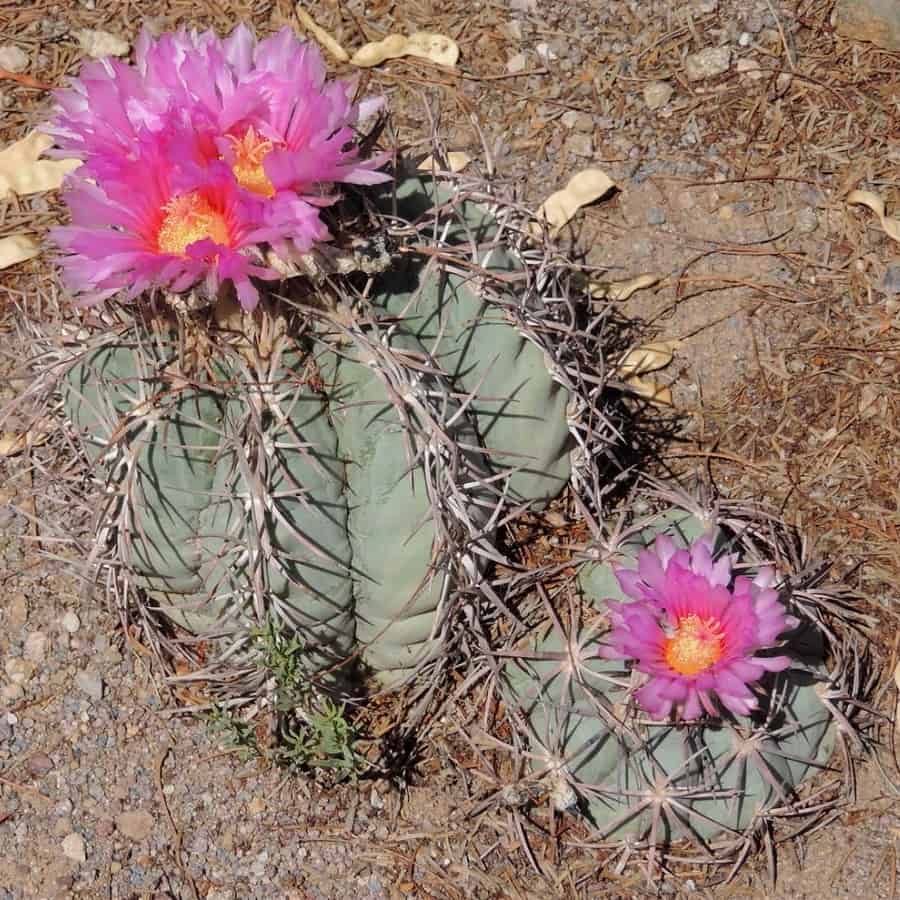
The Nichol’s Turk’s head cactus (Echinocactus horizonthalonius subsp nicholii), is a small barrel cactus normally unbranched. The blue-green stem bears spines on vertical, spiraling ridges.
Echinocactus parryi
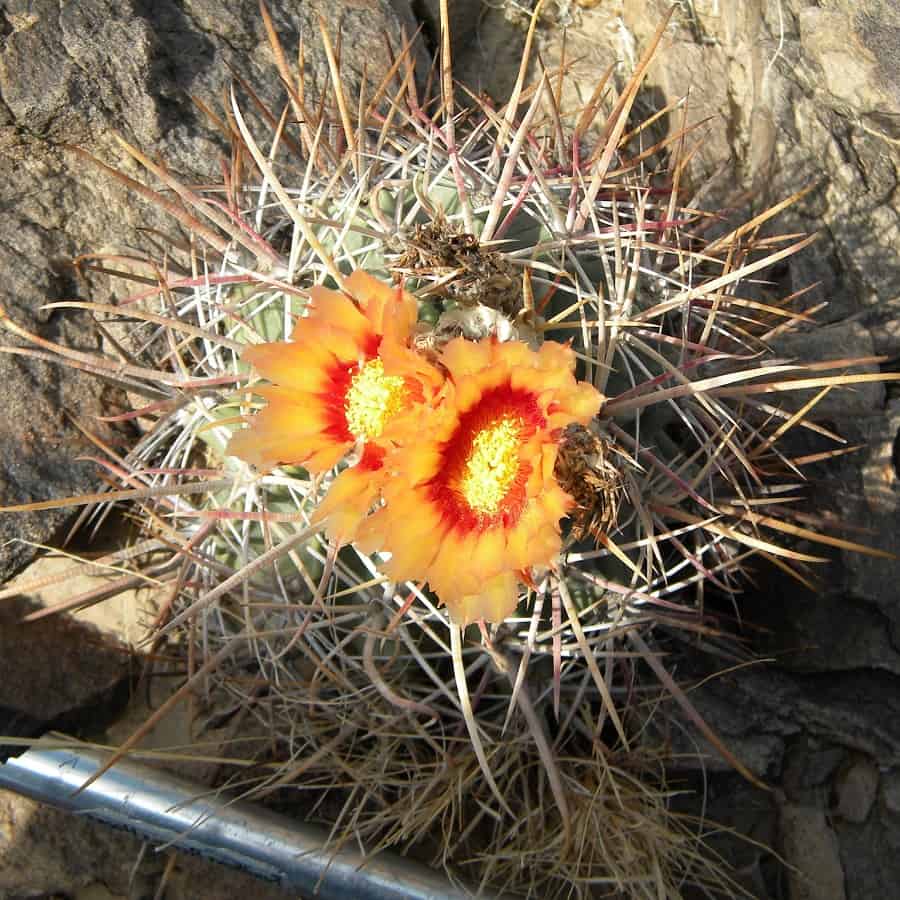
Globose depressed or shortly cylindrical, the Echinocactus parryi is remarkably similar in morphology to Echinocactus polycephalus but distinct by the manner of growth and whiter spines. This Echinocactus is usually solitary but can branch spontaneously under normal conditions.
Echinocactus platyacanthus (Candy Barrel Cactus)
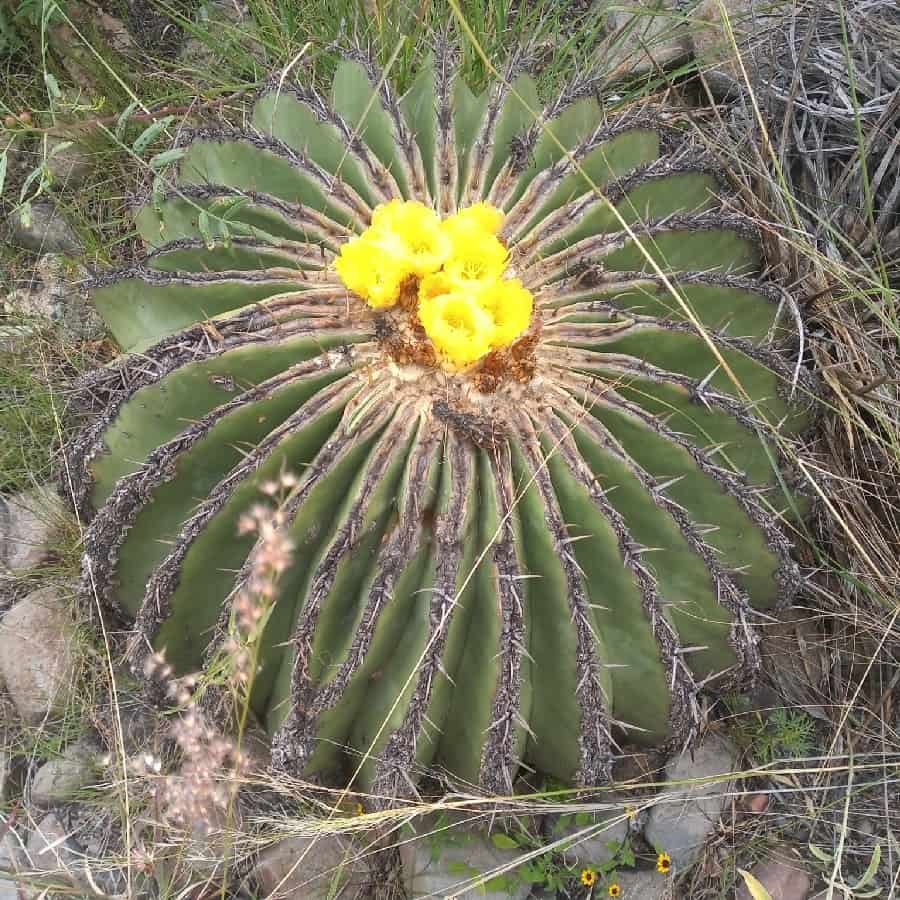
Echinocactus platyacanthus (also known as Echinocactus ingens) is a slowly growing barrel cactus known under the popular name viznaga, it is usually solitary and grows huge in habitat. It could live more than a hundred years and is easily recognized because of its massive size, by far the largest of all barrel cacti.
The stem is grey-blue somewhat tuberculate and nice when small, whilst large plants are heavily ribbed with numerous areoles forming a continuous line. They are day-flowering plants with vivid yellow flowers produced in spring and summer-autumn.
Echinocactus polycephalus (Harem Cactus)
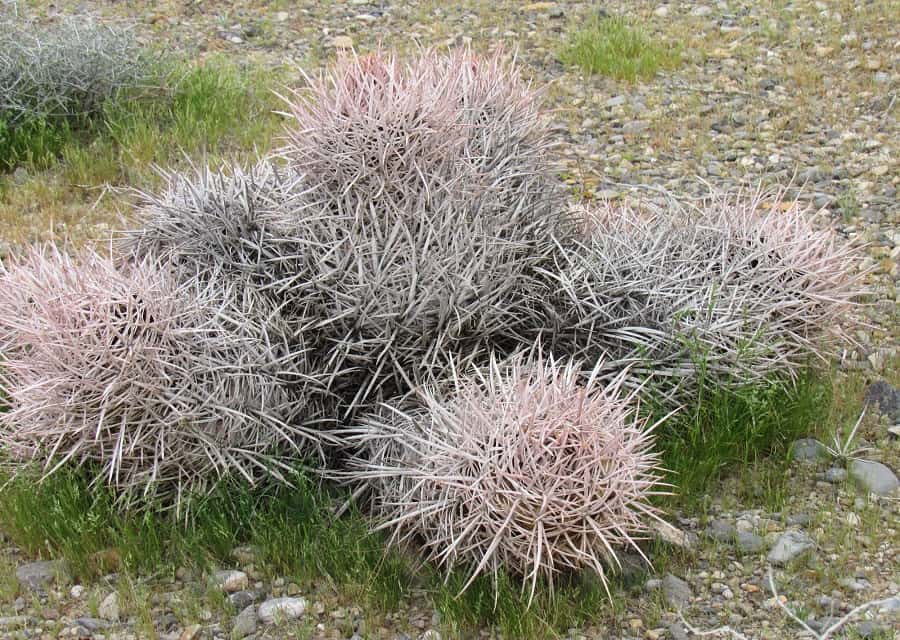
Echinocactus polycephalus is a densely spiny cactus, solitary when young but almost always branching from the base in age and forming spreading clumps of 20-30 heads ( sometimes of more than 100 stems). The clumps are usually about 60 cm tall and up to 120 cm across.
Echinocactus polycephalus subs. xeranthemoides
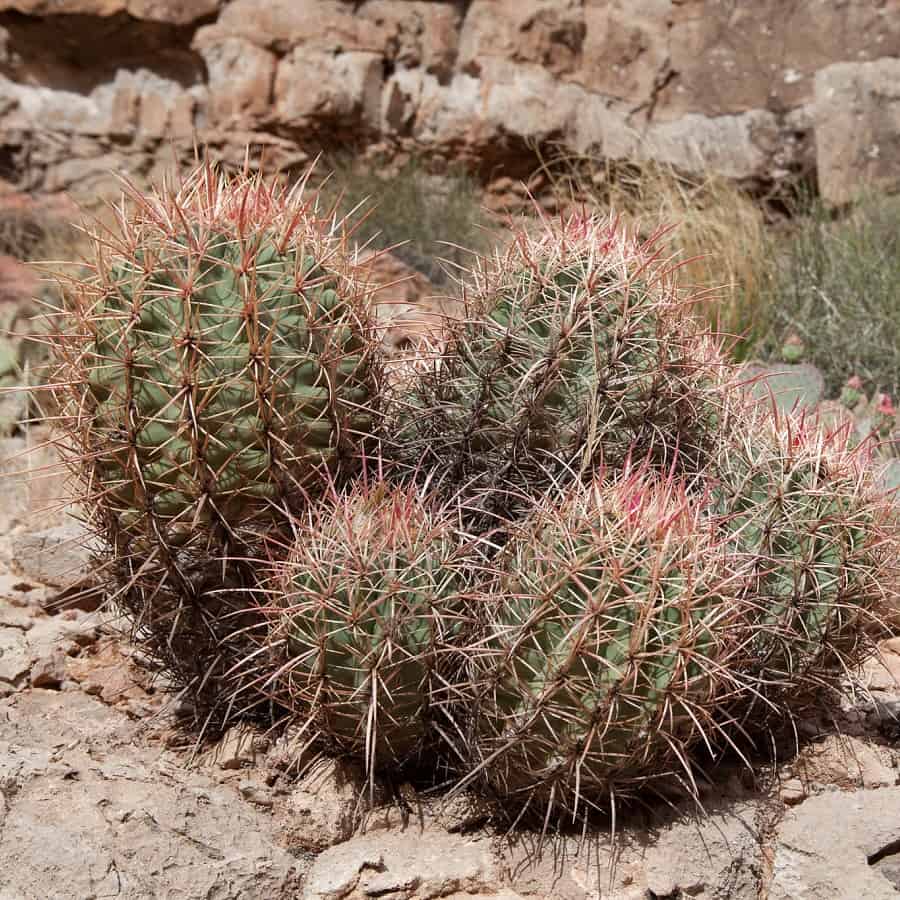
Echinocactus polycephalus subs. xeranthemoides is similar to Echinocactus polycephalus but globose and smaller. It is caespitose and sprouts freely around the base forming unsymmetrical clumps with rarely more than twelve individual heads and is sometimes solitary. The ribs are fewer and spinier.
Echinocactus texensis (Horse Crippler Cactus)
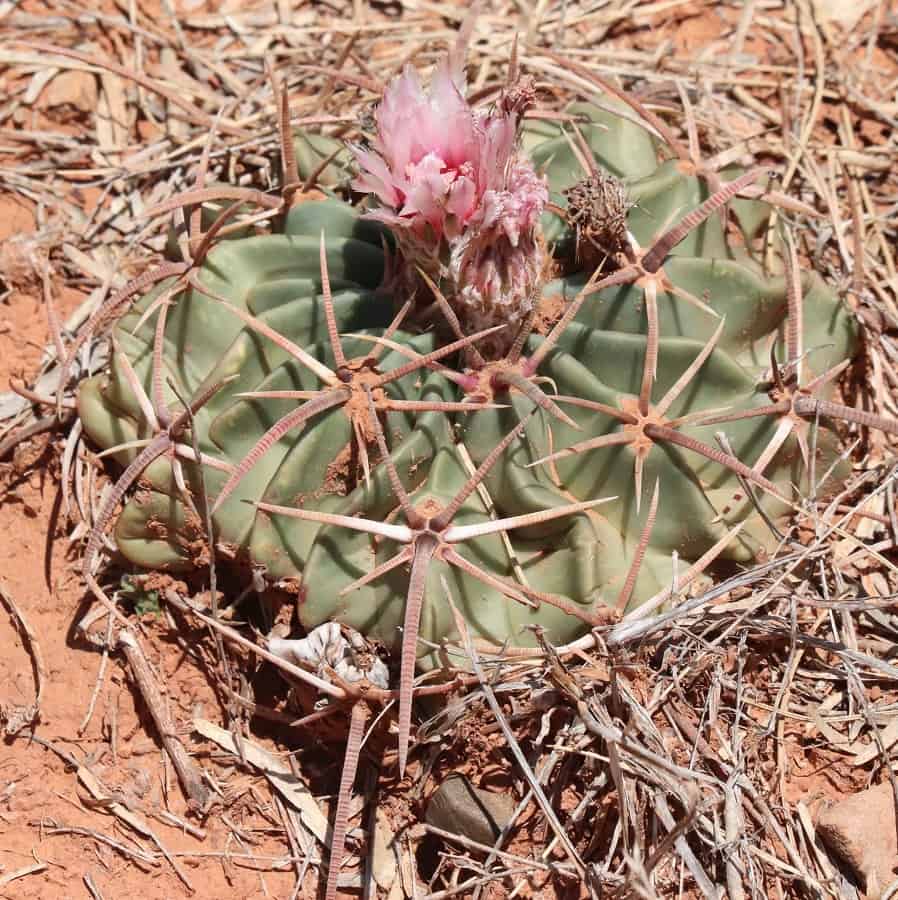
Echinocactus texensis, best known in cultivation as Homalocephala texensis, is a stout barrel cactus, which is solitary when young, very rarely slowly clustering in age.
Echinocactus texensis cv. Anayami Monstr
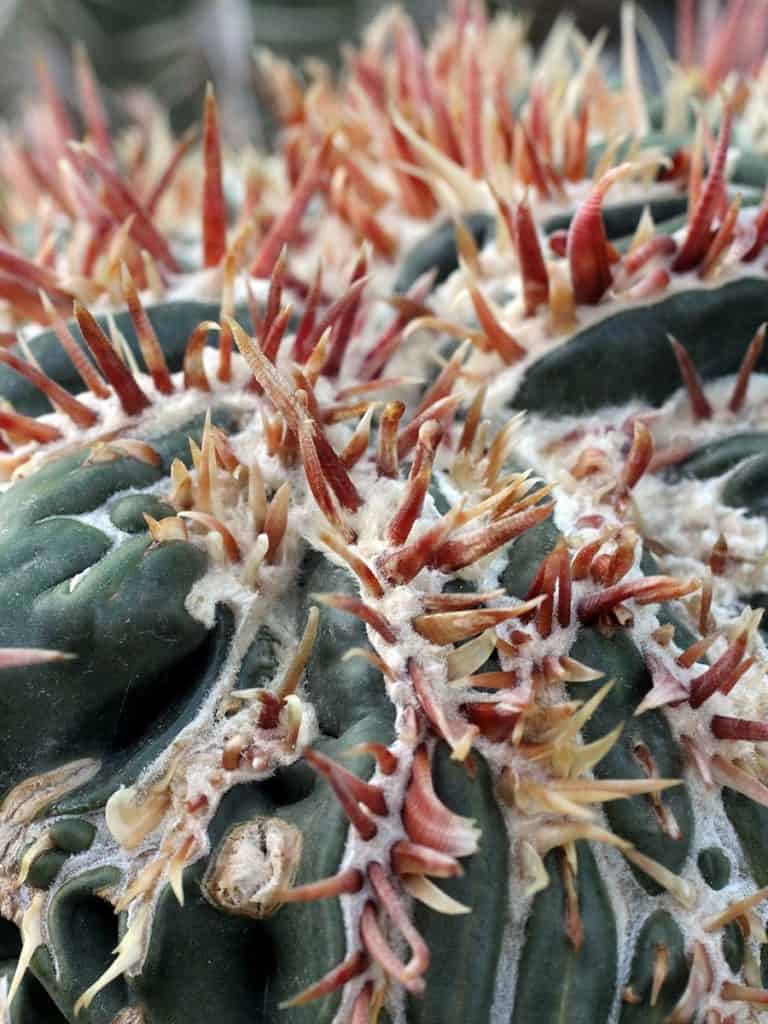
Echinocactus texensis cv. Anayami Monstr is an odd monstrous plant with narrow felt-like areoles derived from the well-known Echinocactus texensis. This form is rare and very different and has many irregular, more or less prominent “warts” or small supplemental monstrous ribs between and on the true ribs’ surface.
Both the true ribs and the smaller “warts” on them bear very elongated, felty areoles filled by more or less pectinate spines. With the exception of the long spiny areoles and irregular ribs, all the other characteristics are identical to the standard species, namely the size of the stem, flowers and fruit.
There is a low chance of flowering but the character of monstrosa is transferred through seeds. By the way, “Ayanami” is just the Japanese name of texensis, which means twilled waves.
Read also:
1,000 Types of Cactuses With Pictures
Growing and Caring for Echinocactus
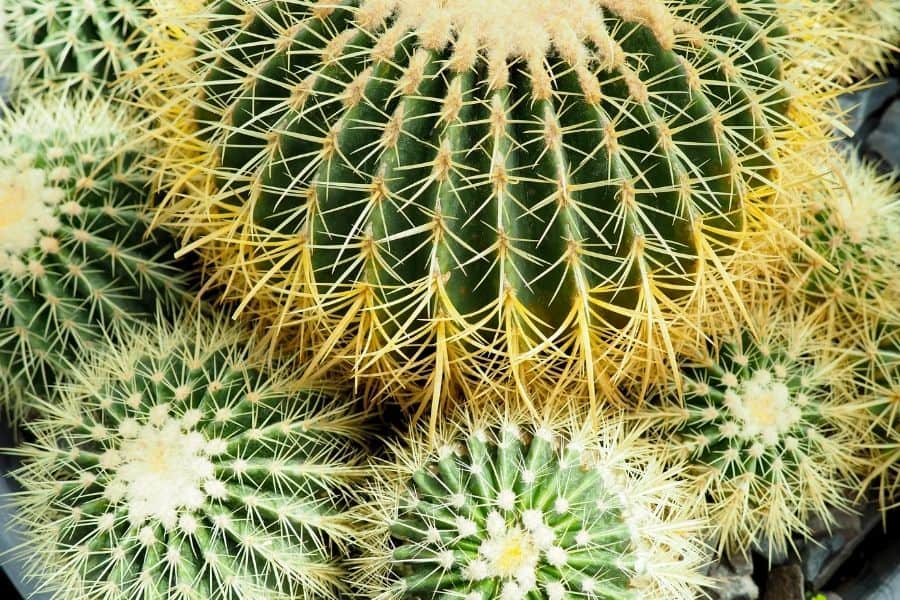
Echinocactus are super cool cactus plants that make awesome houseplants. If you dig their funky spiky look, you’ll want to know how to keep them happy and healthy.
Light
These cacti love getting lots of sunshine. If growing them indoors, set them up right next to a sunny window. For outdoor Echinocactus, pick a spot that gets direct sunlight most of the day. Without enough sun, they’ll start looking sad and withered.
However, be careful not to put them in scorching hot sun that’s too intense. This can actually burn and damage the cactus pads.
Read also:
How Much Sunlight Does a Cactus Need?
Water
Echinocactus don’t need a ton of water. Only water them once the soil has completely dried out from the last watering. Make sure to empty out any outer tray or saucer so no extra water is just sitting around the pot. Too much moisture can cause nasty root rot.
Also, avoid getting water droplets on the cactus itself, especially on sunny days. The water droplets can act like little magnifying glasses and burn the cactus where they sit.
Fertilizer
During the spring and summer growing season, feed your Echinocactus some weak cactus fertilizer every 4-6 weeks. A high-potassium fertilizer works well. But don’t bother fertilizing in fall and winter when they’re resting.
Read also:
Fertilizer for Cactus: When, How and in What Ratio
Soil
Regular potting soil is a no-go for Echinocactus. Use a specialty cactus/succulent soil mix instead. You can also add in perlite to increase drainage so no water hangs around.
Climate
These are true desert cacti that hate humidity. They thrive in hot, dry climates with little moisture in the air. If growing indoors, make sure their environment stays arid and humidity-free, or they’ll struggle.
How to Propagate Echinocactus From Seed
Materials Needed:
- Echinocactus seeds
- Well-draining cactus/succulent potting mix
- Seed tray or pots with drainage holes
- Grow lights (if propagating indoors)
Step 1: Prepare the Potting Mix
Fill your seed tray or pots with a well-draining cactus/succulent potting mix. Gently tamp down the soil but don’t pack it too firmly.
Step 2: Sow the Seeds
Sprinkle the Echinocactus seeds evenly across the soil surface. Add a very thin layer of potting mix over the top, no more than 1/4 inch.
Step 3: Water Initially
Lightly water the seed tray or pots to settle the seeds into the soil. Allow any excess water to drain completely.
Step 4: Provide Proper Environment
If propagating outdoors in a warm climate, place the tray/pots in an area with direct sunlight.
If propagating indoors, place the seeds under a grow light providing 12-16 hours of light per day. Maintain temperatures around 70-85°F.
Step 5: Water Consistently
Keep the seed-starting mix evenly moist but not soggy. Water whenever the top 1/2 inch of soil becomes dry.
Step 6: Watch for Sprouting
Echinocactus seeds may take 2-8 weeks to sprout, depending on the variety. Watch for the emergence of the seedlings.
Step 7: Increase Sunlight Gradually
Once sprouted, slowly introduce more sunlight if propagating indoors. Increase lighting hours and intensity over 2-3 weeks.
Step 8: Transplant Seedlings
When the seedlings are 2-3 inches tall, transplant them into individual pots with a fresh cactus potting mix.
With proper sunlight, watering, and an optimal growing environment, your Echinocactus seedlings will continue developing into mature cacti over the next few years.
Frequently Asked Questions
People always have lots of questions before taking an Echinocactus home. Here are answers to a couple common ones:
How do you repot Echinocactus?
The best time is during the spring or summer growing season. First, make absolutely sure the soil is bone dry with zero moisture. Remove any dead or rotten roots. You can treat with a fungicide if you want.
Then grab a new pot that’s just slightly bigger than the previous one. Too big and it can lead to problems. Plastic, ceramic, or terracotta pots all work well as long as they have good drainage holes.
Fill the new pot partway with fresh cactus soil, then set the cactus on top and fill in around the sides, spreading the roots out. Don’t water right away for at least the first week to avoid rot.
How often do barrel cacti bloom?
Barrel cacti like Echinocactus will bloom with funky flowers in the spring and summer, generally between April and September. The extra sunshine and warm temps trigger their blooming cycle and allow pollination to occur.
In winter and fall, these cacti go dormant with no flowers blooming during the cooler months.
